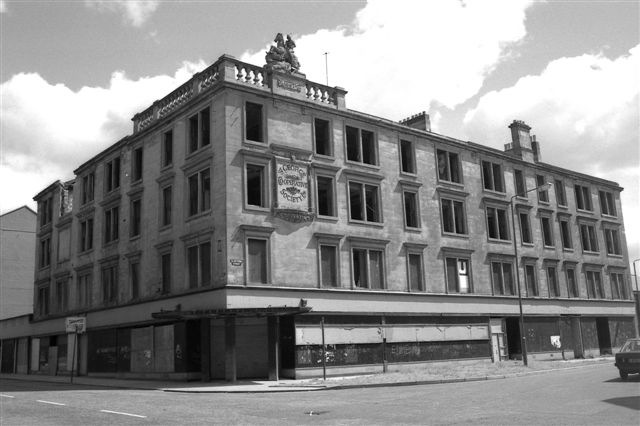
Copyright David Warrilow
The Scottish Cooperative Wholesale Society (SCWS) was founded in 1868, with local branches (societies) quickly developing across Scotland. They built their own factories and developed their own supply chain. The purpose was to supply food and manufactured goods directly to local societies in working class areas , with profits being shared with their customers rather than with wealthy shareholders.
A dividend was earned on every purchase by means of a unique “divi number” which was allocated to each customer. This was recorded in ledger books every time a purchase was made, and the money accrued was paid out twice a year. The divi was a greatly appreciated windfall by low-income families. It could be used to purchase essential items such as shoes for the children, or maybe an item of furniture. There was little that the Co-op did not sell. Entire families, from small children to the oldest members knew their “divi” number off by heart and many can still quote it many years later.

The origins of the St George’s Society go back to December 1870 and a meeting held in Grove St Hall for the purpose of establishing a co-operative store. The people attending were mainly weavers, employed at the nearby Grove Park weaving factory. As a result of their meeting the St George’s Society came into being, and the first store was opened the following year at 398 St George’s Road.
Various other stores across the north-west of the city soon followed, and by March 1897 they had acquired a total of 45 branches. as well as a variety of functional buildings such as workshops. A stables block was built at Craighall Road to accommodate the lorries and delivery vans on the ground floor, with the horses that pulled them being kept in stalls on the upper floor. In the same year the Society opened their landmark store on St George’s Road / Gladstone Street with the distinctive sculpture of St George slaying the Dragon on top of the building.
The Co-op was an integral part of daily life for many working class people, and not only for their shopping. They branched out into other service industries, such as restaurants, banking, insurance and funerals. When a person died, all the arrangements could be made via the Co-op, using their undertakers and their restaurant for a meal. In all probability the expense would be covered by the life insurance policy to which the family had contributed weekly payments to the Co-op insurance agent when he came calling.
The impact of the Co-op on the neighbourhood cannot be over-stated, with all kinds of activities being provided for local people including a library, choirs and a literary society. The Co-operative Guilds provided an introduction to political engagement for many women, very few of whom had the vote in the early days, and were not generally encouraged to become involved. Sporting activities were financed from the education and benevolent fund, and they had a representative on the Glasgow School Board.
In the second half of the 20th century the Scottish-based Co-operative movement began a terminal decline, and in 1973 ceased to exist after merging with the Manchester-based CWS. The landmark building fell into disrepair and was demolished in the early 1980’s. Modern flats now occupy the site.
